Design Process
For the design of these artifacts, I focused on building off of what we created in class. I really enjoyed the “Pipe” command in rhino for the previous assignment because I was able to alter the width of the object at any point to make really interesting shapes. Because of this I made the first two vases with 8 instances of my shape from bottom to top. I used polygon for the first vase and edited the radii and number of edges of the intermediate shapes to make the curves. For the second vase I used the triangle gear and the twist code along with changing the paramters of the radius, number of edges and the amount to twist the object. Lastly, for the third vase I created a function called flowerGear which is similar to triangle gear but I wanted the outcome to resemble a flower.
Rendered Images
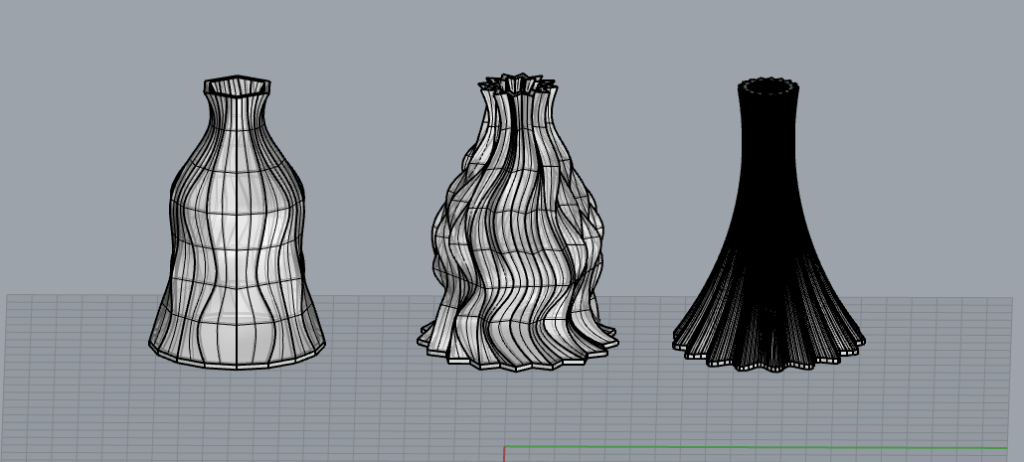
Images of Printing Process
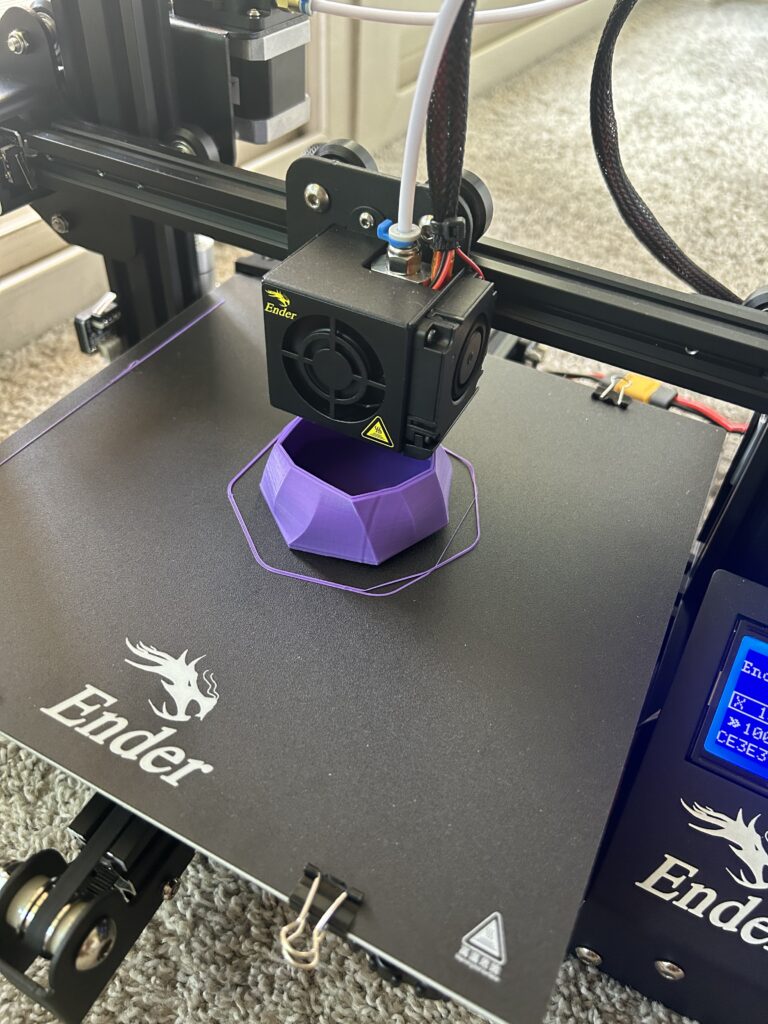
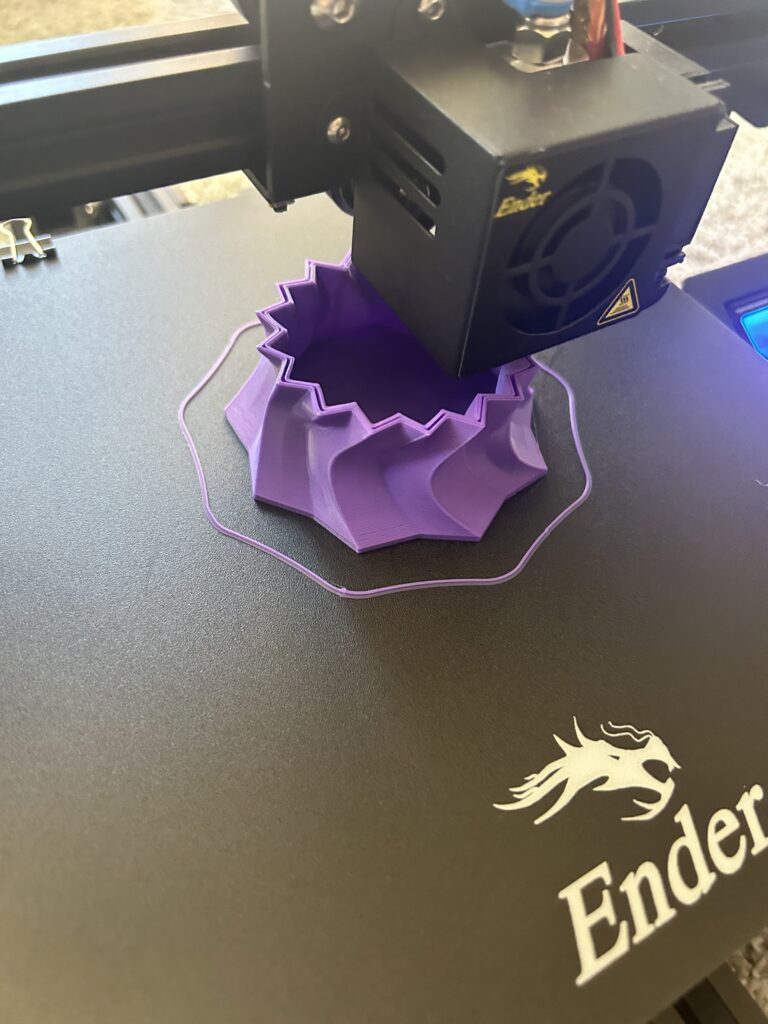
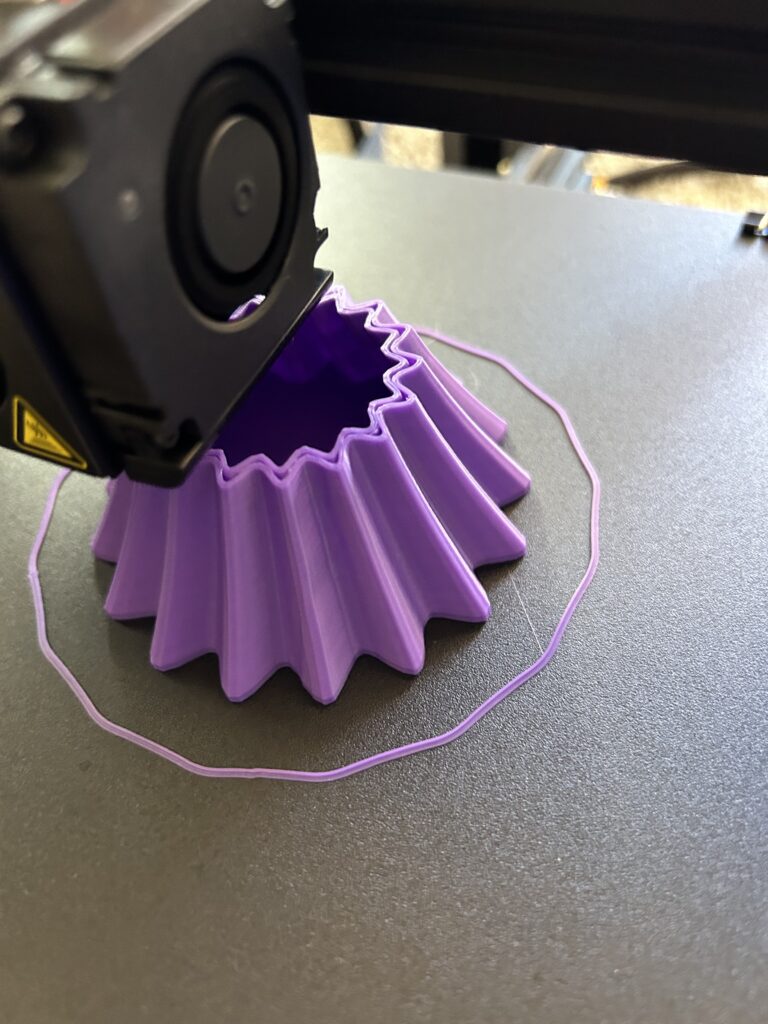
Final Print
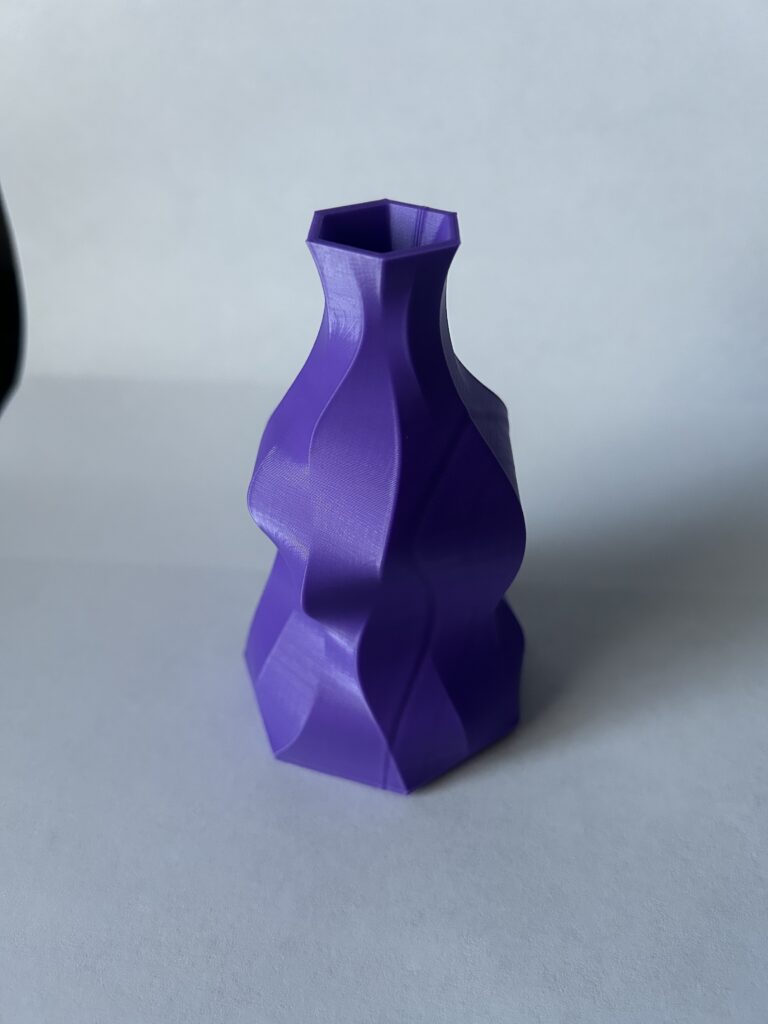
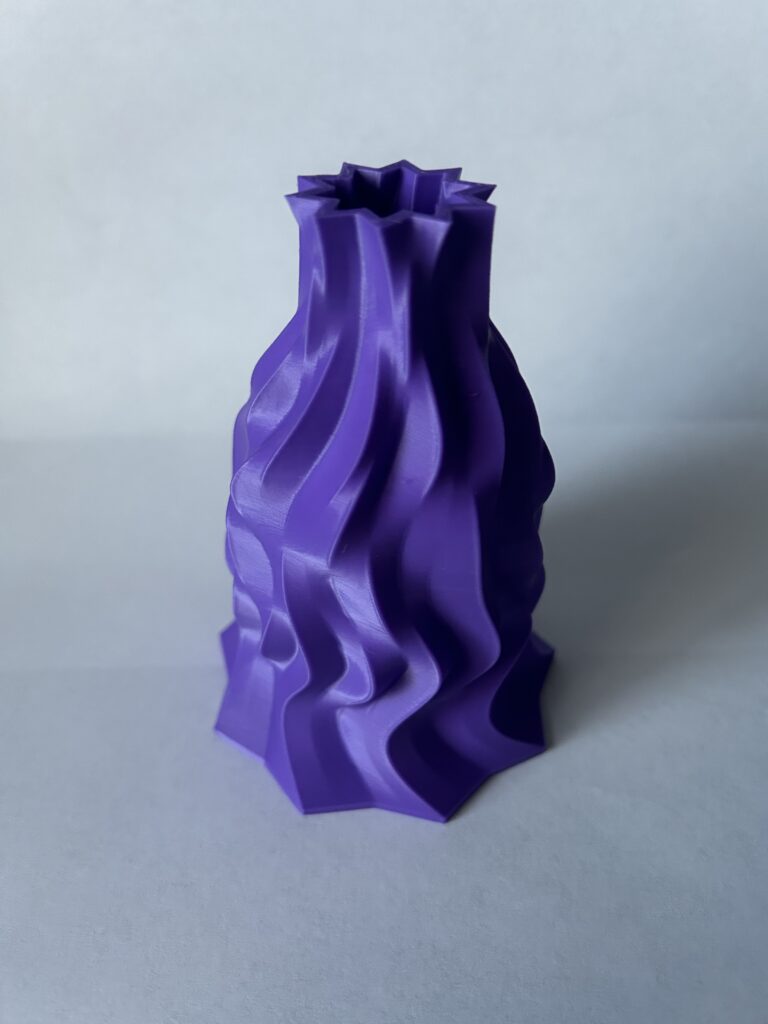
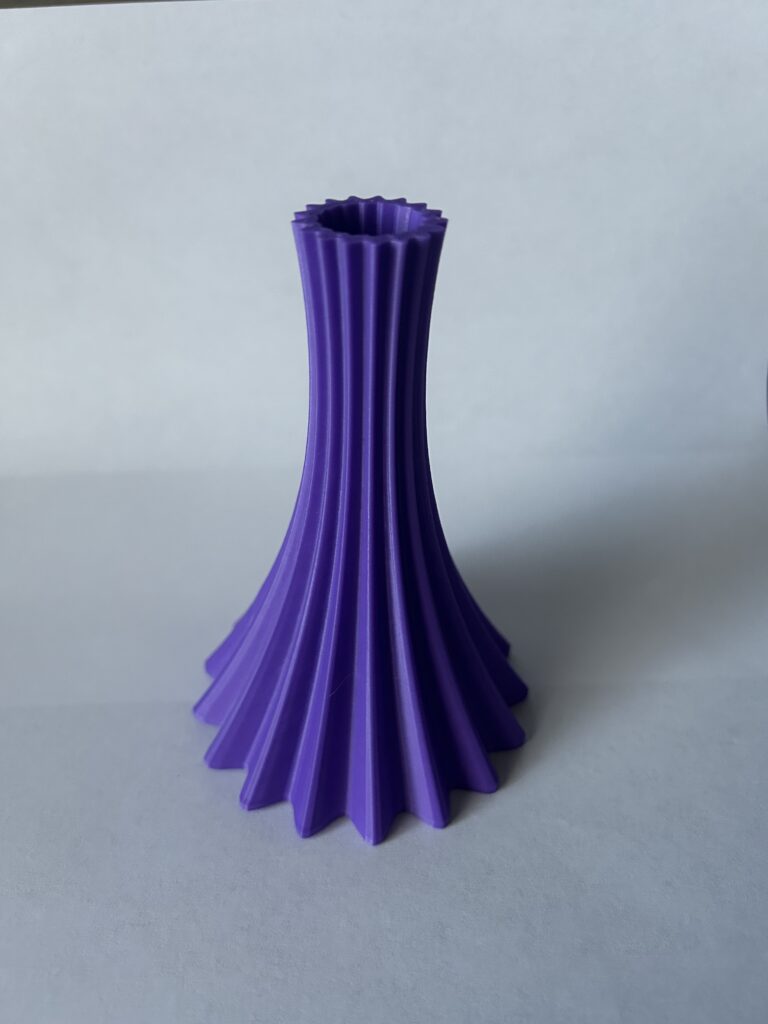
Parametric Design Process
I really enjoyed using a parametric design process and python code to create these artifacts. I felt like the objects I would create were significantly more consistent using python to create curves, edges, shapes, surfaces, etc. Creating objects in rhino is a very fun experience but I definitely think if the goal of the project is precision or repetition that using programming to create those objects is really intuitive and simpler than using the rhino interface.
Creative Agency and Intent
For the first two vases I used the code we created in class and messed with the number of shapes, twist of the shape, number of edges and the radius of each shape. For these vases I definitely went down a more trial and error road and continued to mess with the inputs until I made shapes that I found interesting. For the third vase I knew what kind of base curve I wanted to create when I read the assignment and I spent most of my time figuring out how to accomplish this in grasshopper/python.
Often I would have to edit and adjust heights, radii, twist strength and number of points generated after finding a shape I liked would have too many structural errors found by Cura. The most common issue I ran into was too much overhang and I wanted to minimize supports as much as I could. One special case I had was when I tried rendering my flowerGear it said it had to create around two million points and continued to crash grasshopper. The nested for loop in my code was the root of the problem and I was able to fix this by increasing the value at which the inner loops variable stepped. I also had to decrease the number of shapes in the third vase to decrease the number of points generated which is why this one has a more smooth upward curve than the other ones.
Hi Patrick,
I love your third vessel, the a flower like shape was a goal I also had. Your purple filament is very eye catching. Similarly, I also struggles with creating to many points which then caused grasshopper to seemingly just stop. Did you have any trouble with your prints due to some of the sharp edges?
Best, Andrea
Hello Andrea,
My extruder originally on the second vessel was moving too fast and it really messed the print up. I had to slow the extruder speed and the flow speed so it could actually make those quick turns without messing up the entire print.
Hi Patrick,
These designs are dope, especially that second one! I liked the organic appearance of the vessel–and the purple accents it so well. The third vessel is also nice. I like how you took one design that was proven to look aesthetic and then just tweaked it for another design you wanted. I’m definitely going to try to do something similar in future assignments!
Best,
Jyrus
Hello Patrick,
Your second vessel is funky, very eye-catching. I was a little thrown off by the beginning of your post however as I thought you actually used the pipe command, which not have made much sense as I’m pretty sure pipe can’t be done with unique base curves.
What are your thoughts on just creating your shapes by trial and error? Do you think the shapes are more unique than what you may have come up with if you planned the designs prior?
Hello Nathan,
I think both methods are interesting. I do prefer my second vessel which I created with mostly trial and error but it did involve some thought before hand. I think a mixture of both trial and error and preplanning the design can make interesting and fun shapes.
Hi Patrick,
These are very neat vessels! I like the second one in particular, which is pretty organic looking. Your prints look quite pristine as well – did you encounter any print issues or failed prints in the process?
Louis
Patty cakes,
Incredible vessels. One of my shapes had the intent to look like sheets, draped over a vase. I really like how yours has that fabric or melting look. I think it is really impressive, how it doesn’t look printed very realistic. Were there any tips you discovered while creating that second vessel? Really want to replicate that on a future print. Again, great post.
Justin